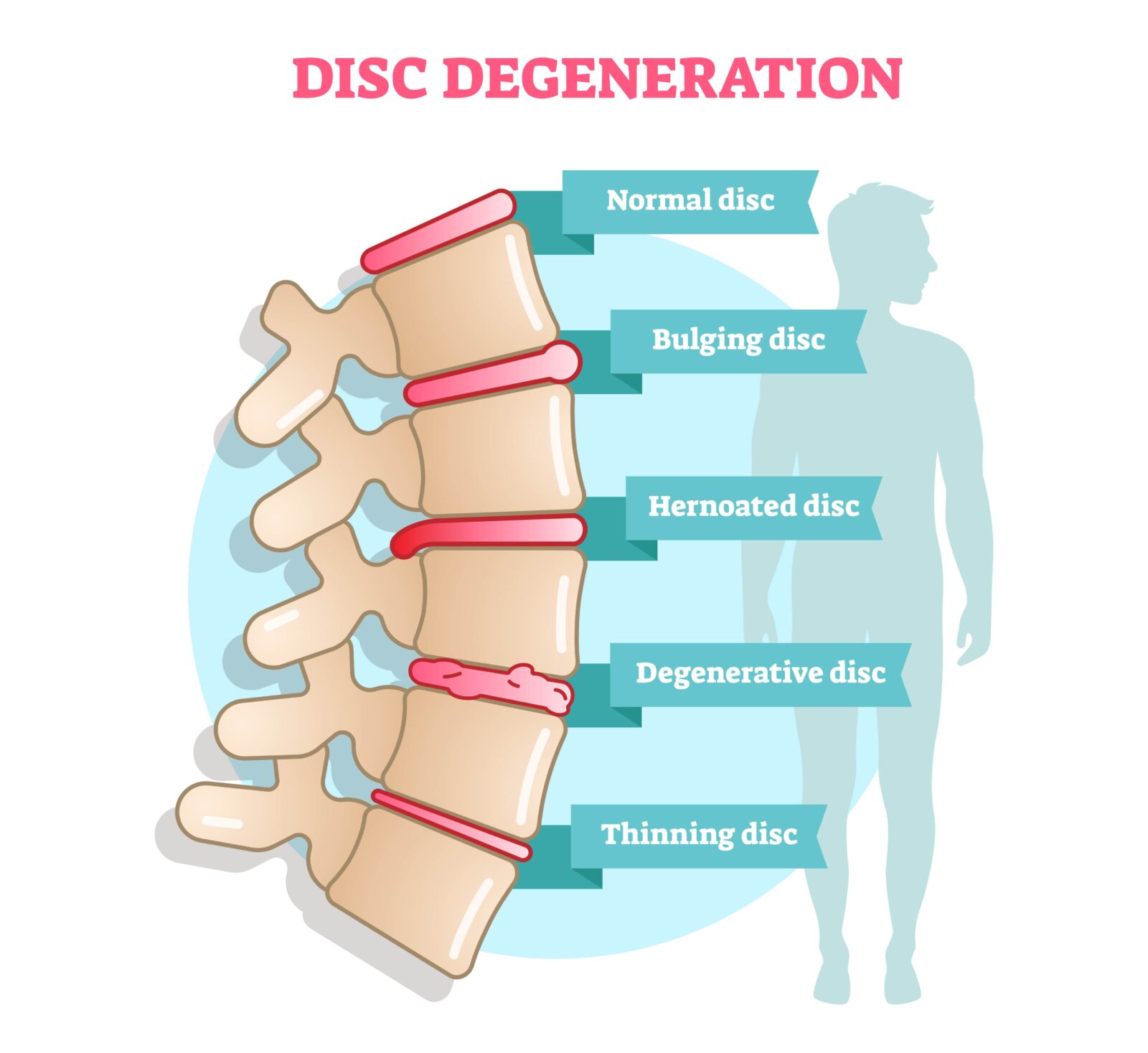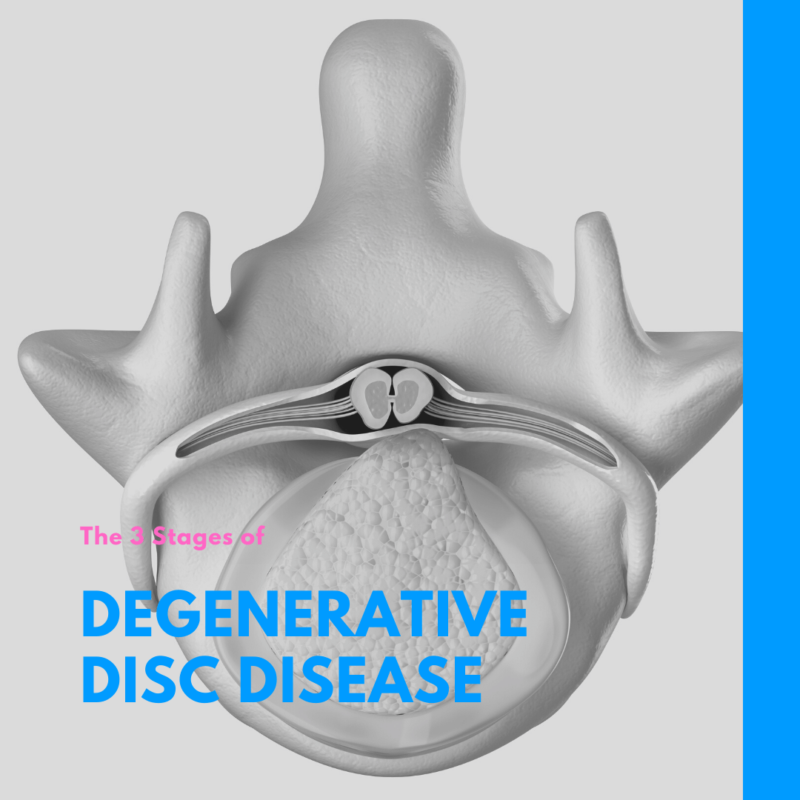Many things happen to our bodies as we age and our spines are no exception to this. In fact, the general wear and tear associated with everyday life can eventually take a toll and cause the spinal discs between the vertebrae to wear down. This is especially true in regions of the spine that undergo the most amount of stress on a daily basis, such as the cervical and lumbar spine. When the spinal discs begin to wear down, this is known as disc degeneration. Although everyone experiences disc degeneration as a natural part of aging, some people may experience varying degrees of severity.
Degenerative disc disease is a term commonly used to describe the pain, instability, weakness, and other symptoms that could be associated with a degenerating disc, despite the fact that it is not a disease at all. On its own, a degenerating disc does not often cause pain because there are very few nerves in the disc. However, disc degeneration can lead to the development of other spinal conditions such as spinal stenosis, osteoarthritis, spondylolisthesis, and scoliosis.
Oftentimes, pain and other symptoms associated with disc degeneration is due to the development of these additional spinal conditions or when the disc affects the surrounding muscles, joint, or nerve roots.
When the surrounding structures are affected by a degenerative disc, a number of symptoms can occur depending on the location of the disc, as well as the extent of degeneration. The “degenerative cascade” of a disc, as some doctors call it, is defined by three stages:
Stage 1:
The first stage is characterized by a change in the spine’s structure, which subtly affects its function. Oftentimes, this takes the form of losing the natural balance and curvature of the spine. This can cause subtle changes in posture, minor discomfort, and fatigue from the muscles compensating for the changes in posture. At this point, the affected disc generally has small circumferential tears in the outer layer of the disc that begin to grow towards the center.

Stage 2:
The second stage is when the degeneration is considered to be moderate. At this stage, the inner disc material begins to leak out of the tears, which decreases the height of the disc. This can also cause pressure on the surrounding structures. As a result, postural changes become more evident, as does discomfort and fatigue. Still, most people may not associate these symptoms with degenerative disc disease. In fact, many people around the age of 40 are already at stage 2.
Stage 3:
The third stage is the most damaging stage and the stage where affected individuals may seek out medical intervention to alleviate chronic back or neck pain. During stage 3, the degenerating disc may compress the surrounding nerves, causing pain, weakness, and numbness. Additionally, bone spurs can also form during this stage, which can also contribute to nerve compression. As a result, individuals may experience radiating pain in the arms, legs, hips, and back, depending on the location of the affected disc. It is also common to feel frequently tired.
In Conclusion,
No matter what stage of degenerative disc disease you are in, seeking treatment from an experienced spinal specialist can help. There are several non-surgical treatments available to alleviate the symptoms of degenerative disc disease. Additionally, there are also some surgical options that can improve your quality of life if you struggle with severe pain or loss of function. Overall degenerative disc disease can be treated and generally responds to treatment to some extent.











 in CA by O360®
in CA by O360®